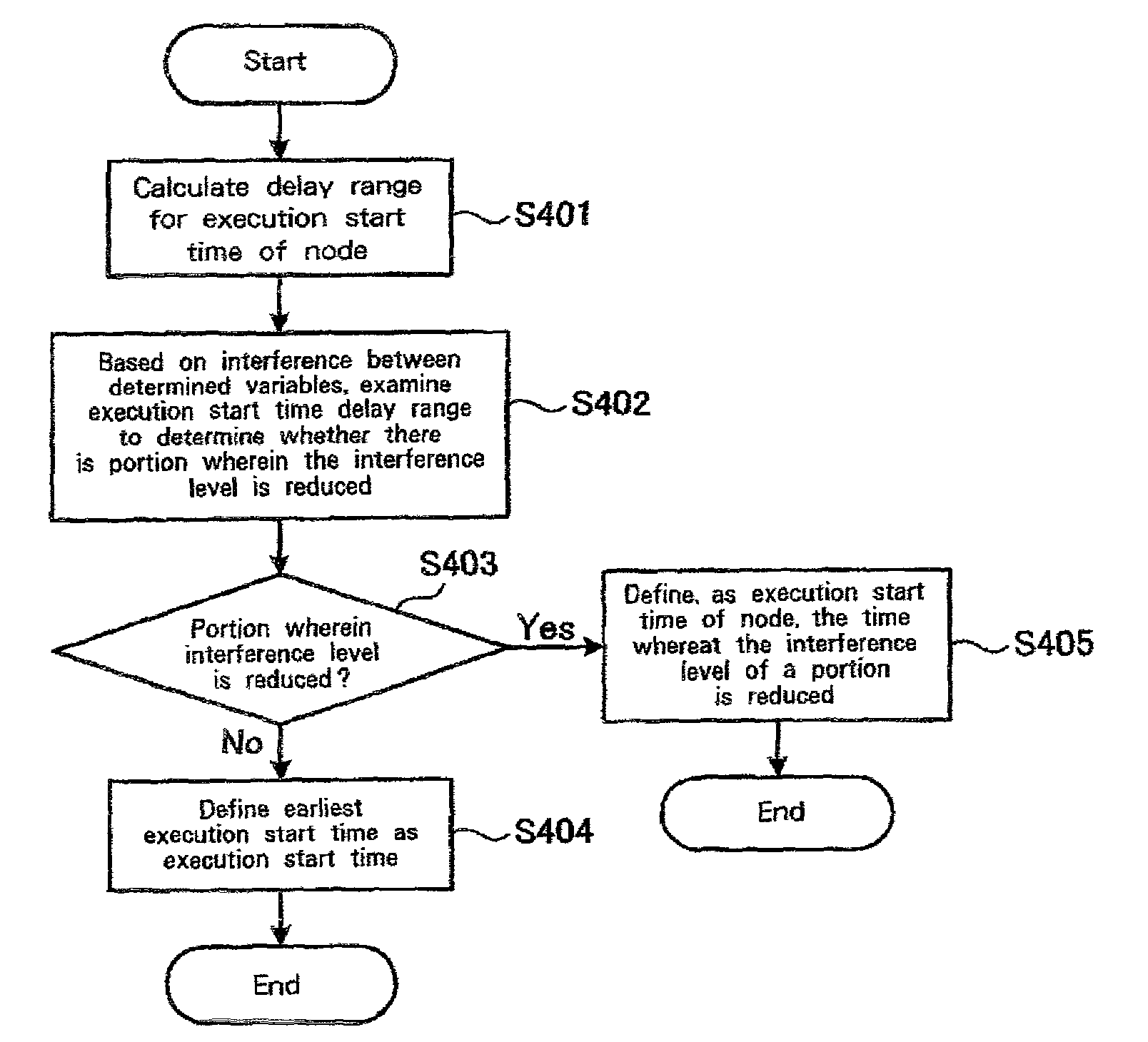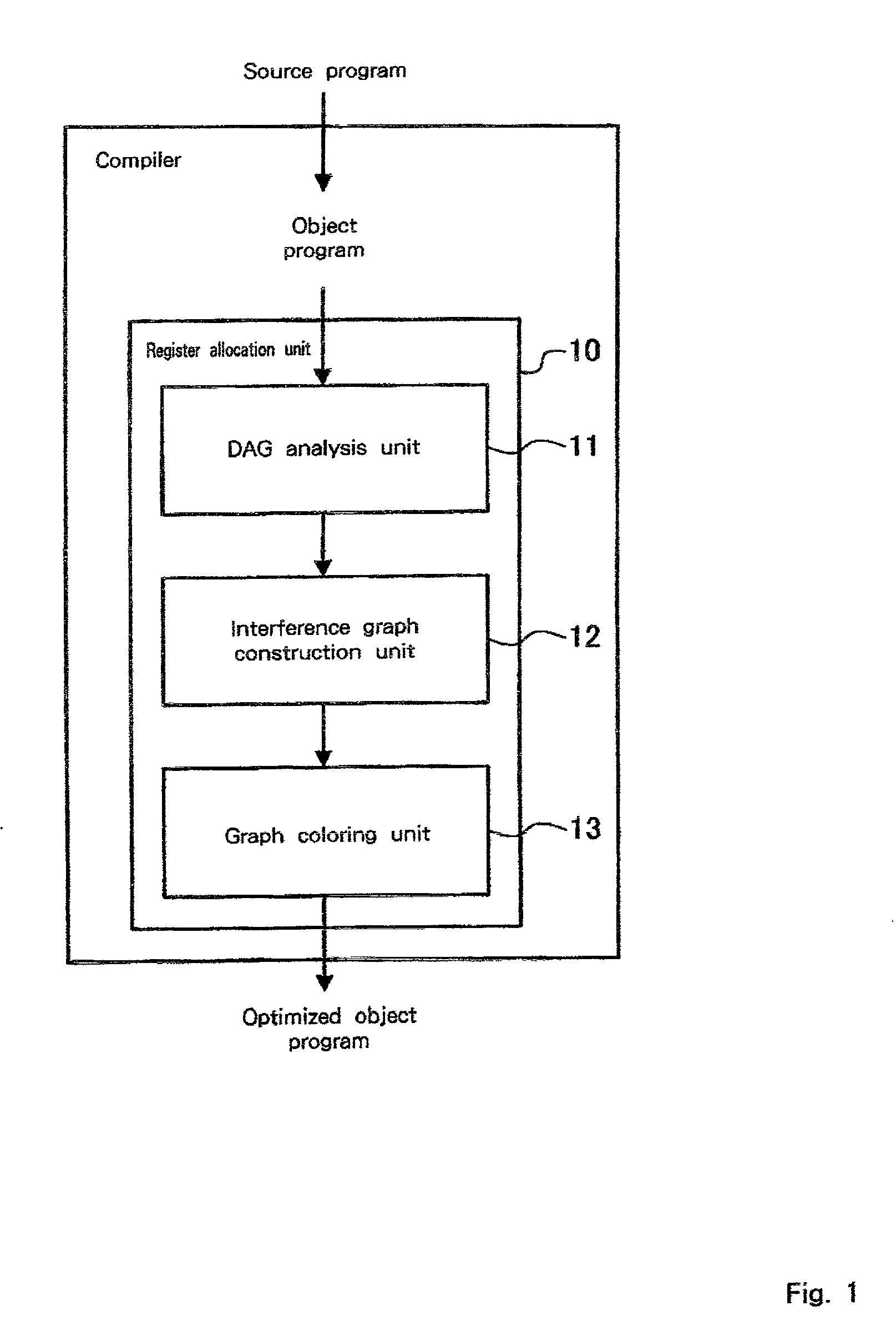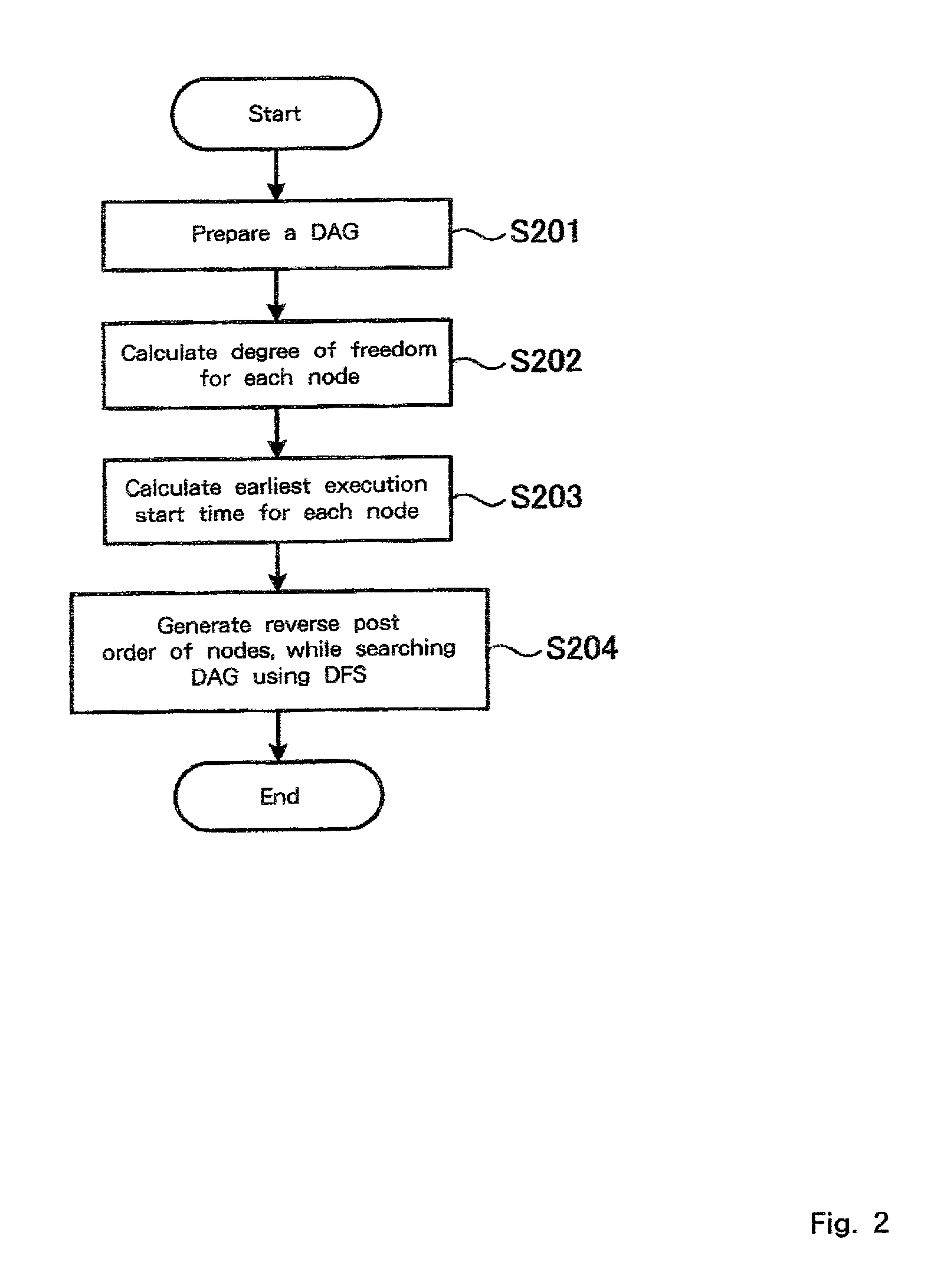Compiler and register allocation method
a register allocation and compiler technology, applied in computing, instruments, electric digital data processing, etc., can solve the problems of increasing the time required for compiling, affecting the level of the actual register, and reducing so as to achieve the effect of minimizing the number of interferences
- Summary
- Abstract
- Description
- Claims
- Application Information
AI Technical Summary
Benefits of technology
Problems solved by technology
Method used
Image
Examples
Embodiment Construction
[0051]The preferred embodiment of the present invention will now be described in detail while referring to the accompanying drawings.
[0052]An overview of the invention will now be given. According to the invention, a DAG (Directed Acyclic Graph), a directed graph that represents the order for the execution of the instructions in a program to be compiled, is prepared, and the degree whereat each instruction affects the execution time is calculated, based on the DAG. The instructions are arranged based on an obtained degree, and an interference graph is constructed while taking into account the order in which the instructions are executed. That is, with the condition that the overall program execution time will not be extended, an interference graph is prepared that includes an interference for guaranteeing the minimum required parallel execution.
[0053]To implement this, in this invention the phase arrangement order of nodes (instructions in the program) in the DAG is determined, so t...
PUM
 Login to View More
Login to View More Abstract
Description
Claims
Application Information
 Login to View More
Login to View More - R&D
- Intellectual Property
- Life Sciences
- Materials
- Tech Scout
- Unparalleled Data Quality
- Higher Quality Content
- 60% Fewer Hallucinations
Browse by: Latest US Patents, China's latest patents, Technical Efficacy Thesaurus, Application Domain, Technology Topic, Popular Technical Reports.
© 2025 PatSnap. All rights reserved.Legal|Privacy policy|Modern Slavery Act Transparency Statement|Sitemap|About US| Contact US: help@patsnap.com



